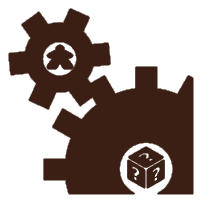Challenge Dice Illustrations
Illustrations used in the Mechanics Makeover: Dice in a Cup.
The Game Mechanics tag identifies content focusing on game mechanics (conceptual) and mechanisms (the physical implementations of mechanics).
If this content is of particular interest to you, you can subscribe to it specifically by clicking on the "Subscribe to..." link at the bottom of this page.
